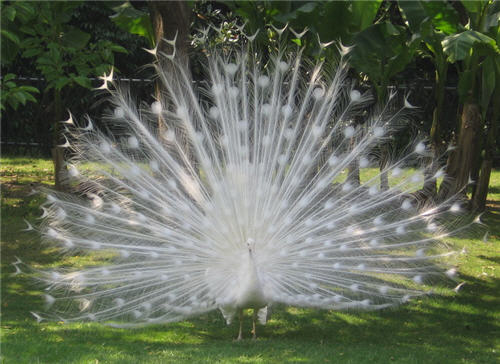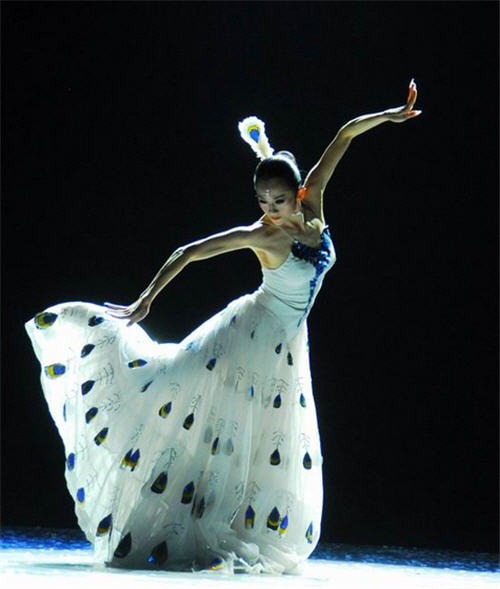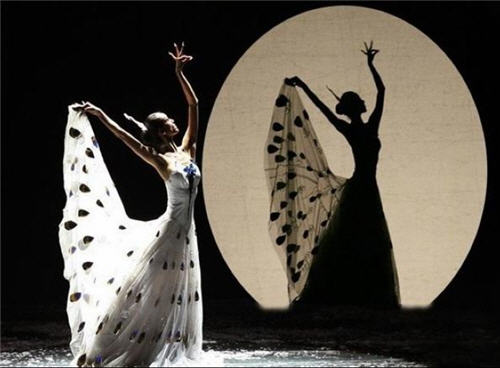Situated on the southwest boarder of China and enjoying a tropical weather and nature, Yunnan has nurtured the Dai people’s tradition and culture. As a precious bird in the sub-tropical zone, the peacock is beautiful and tame. To the Dai ethnic group, it stands for auspiciousness and beauty. Thus they create Peacock Dance to reflect their respect for peace, honesty and beauty.

There is a legend about the origin of the peacock dance. One day a thousand years ago, the father figure of Dai Minority saw a beautiful peacock dancing gracefully, and he could not help imitating it. From generation to generation, thousands of folk dancers perform the Peacock Dance perfect continuously.
As a symbol of good luck, happiness, beauty and honesty, the Peacock Dance is to present a eulogy of and express good wishes for a happy life. When it comes to the New Year of the Dai calendar, at the Gate Closing Festival, the Gate Opening Festival and some important religious events, Peacock Dance is usually performed.
Nearly all the Dais, especially those in Ruili County and Genma County, can dance the Peacock Dance. Dai people know the living habits of peacocks, so they perform the peacock dance gracefully really like a peacock dancing.
They produce various dance steps. Their dances have strict rules and requirements, fixed footwork and even fixed accompaniment. The procedure contains several steps. At the beginning of the dance, a peacock flies outside from its nest, watching around sensitively, and begins to dance elegantly. Then, it pokes the grass and looks for food and water. When it finds food and water, it will go to the bank of river and take a bath. At last, the peacock outspreads its wings and flies happily.
The movements of the dance are quite diverse. The most common hand gestures include tucking the thumb under with the four fingers extended close together, the peacock hand (the thumb slightly tucked, the index finger bent and the other three fingers spread in a fan shape), and the eye gesture (the thumb and index finger close to each other and the other three fingers spread in a fan shape to imitate the shape of an eye). The dance steps include tiptoeing and undulating steps such as kicking one foot backward toward the hip, stepping back, then stretching and bending the other leg in rhythm.

There are also several rules when appreciating the Peacock Dance. First of all, the dancers’ knees always wave flexibly. It is the common feature of Dai dance. The knees don’t wave mechanically but flexibly according to the change of performers’ sentiment. Secondly, the elegant dance is shown by the flexibility of performers’ arms, wrists, and fingers. The movements are soft and elegant to show the docility of peacocks. Thirdly, the performers’ legs move promptly and the eyes move flexibly to show the flexibility of the peacock.
As the crystal of Dai people’s wisdom, the Peacock Dance is of high value of appreciation and cultural connotation.

